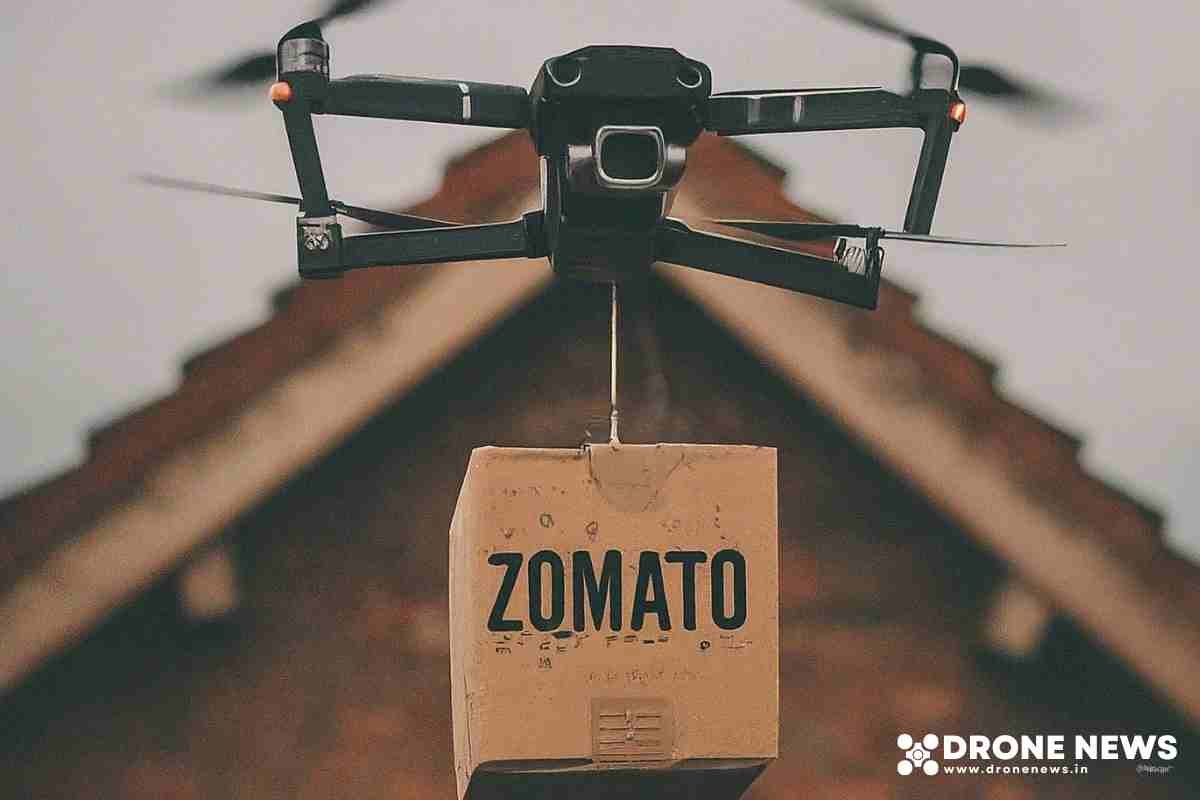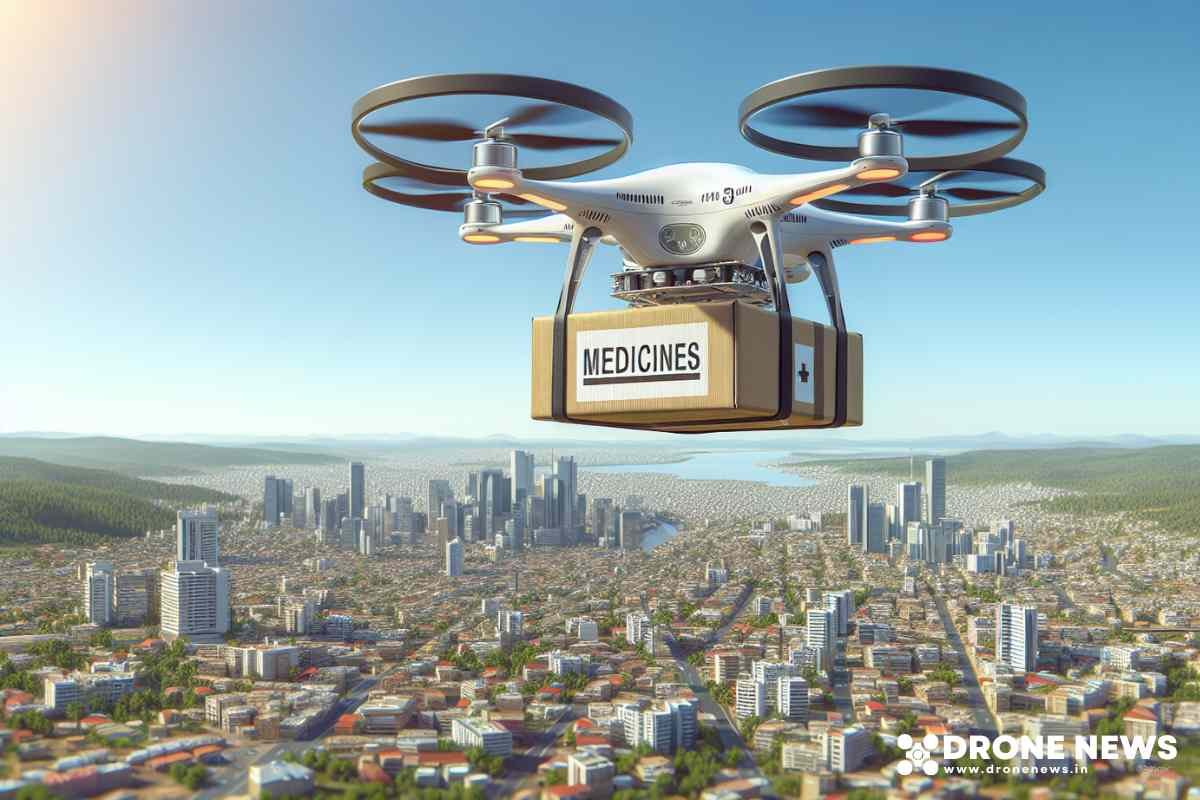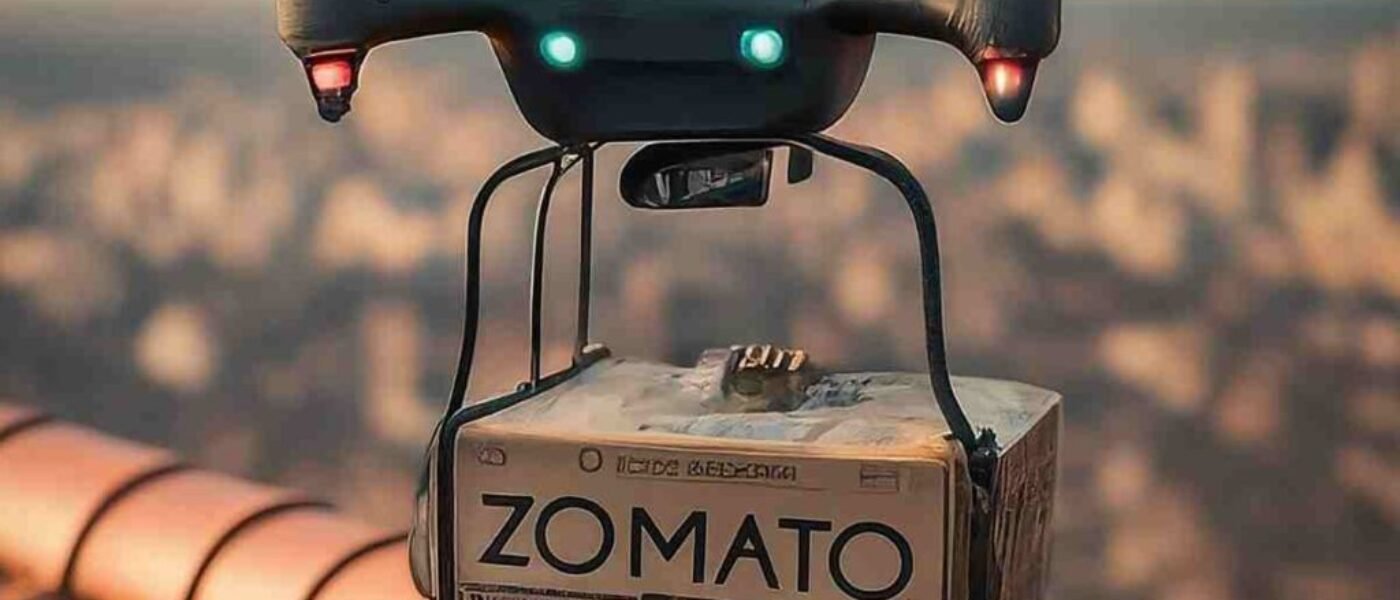Introduction
Imagine a future where buzzing drones glide silently across the skies, offering a new dimension to the delivery landscape in India. It might seem like a scene plucked from a sci-fi movie, but it’s turning into reality faster than we think. From bustling cities to remote villages, drone delivery is set to transform how goods and essential services reach people. Whether it’s delivering critical medical supplies to hospitals or ensuring last-minute parcels reach your doorstep, the era of drone delivery services is dawning upon India. But what does this mean for the country’s infrastructure and economy? Let’s dive into what this fascinating future holds.
The Current Landscape of Drone Delivery

Overview of Drone Delivery Services in India
The drone delivery services in India are experiencing a burgeoning phase, bringing futuristic solutions closer to everyday reality. With its diverse and expansive topography, India presents both opportunities and challenges for this innovative delivery method. Initially deployed for experimental purposes, drone deliveries are now being integrated into sectors such as e-commerce, healthcare, and logistics. From delivering essential medical supplies to remote villages to sending parcels in bustling metropolises, drones are proving to be versatile helpers in the transportation mix.
Key Players in the Indian Market
India’s drone delivery sector is populated by both startups and established firms. Among the notable players is Garuda Aerospace, a tech-savvy company at the forefront of leveraging drone technology for diverse applications. Other important contributors include companies like Zomato, known for planning to revolutionise food delivery with drones, and the likes of Swiggy and Dunzo, which are exploring drone-based logistics solutions. Additionally, drone manufacturers are continually innovating to produce more advanced and efficient delivery drones, thereby boosting the sector’s growth potential.
Regulatory Environment
The regulatory environment is a defining factor for the future of drone delivery in India. While the Directorate General of Civil Aviation (DGCA) has laid down a foundation with specific guidelines for drone operations, there is still a journey ahead to fine-tune these policies. Encouragingly, the Indian government is keen on fostering innovation, reflected in easing norms and deploying pilot projects. As regulations evolve, they are expected to provide a safer and more structured framework, paving the way for increased adoption of drone delivery services across the nation.
Benefits of Drone Delivery
Speed and Efficiency
One of the most enticing benefits of drone delivery is the substantial increase in speed and efficiency. Drones soar over traffic jams and geographic obstacles, ensuring swift arrivals. For emergency situations, such as delivering medical supplies or urgent packages, drone delivery can be a literal lifesaver. The agility of these aerial vehicles promises to cut down delivery times from hours to mere minutes, which can revolutionise the last-mile delivery segment drastically.
Sustainability and Environmental Impact
Drone delivery champions sustainability by reducing the carbon footprint associated with traditional delivery vehicles. Battery-operated drones are inherently eco-friendly, emitting negligible greenhouse gases compared to fuel-powered trucks or bikes. By substituting traditional methods, drones contribute to a cleaner environment, aligning with global efforts towards sustainability and climate change mitigation.
Economic Implications for Traditional Delivery Services
The proliferation of drones could significantly shift the economic landscape for traditional delivery services. While this might appear challenging at first glance, it introduces opportunities to optimise operations, reduce manpower costs, and foster innovation within existing logistics frameworks. It encourages traditional service providers to rethink their delivery models and potentially incorporate drones, thereby staying competitive in a rapidly evolving market. This technological infusion might, in turn, generate new jobs focused on drone maintenance, operations, and management.
Challenges and Obstacles
As exciting as the prospect of drone delivery is, there are several hurdles to overcome before it becomes a staple service in India.
Technical and Safety Concerns
One of the primary concerns is technical reliability. Drones must be robust and equipped with cutting-edge technology to handle various weather conditions, manage long distances, and avoid collisions. Safety is another significant worry. Ensuring drones don’t pose a threat to people or property is crucial and requires advanced navigation systems, reliable communication links, and redundant safety features such as fail-safes and emergency landing protocols.
Public Perception and Acceptance
Public perception and acceptance also play a pivotal role in the success of drone delivery services. The idea of buzzing drones might not sit well with everyone. Privacy concerns are prevalent, as people worry about the potential for drones to intrude into their private spaces or compromise their personal safety. Building trust will require transparency about how drones operate and clear communication about their benefits.
Infrastructure and Implementation Barriers
India’s vast and varied landscape presents unique infrastructural challenges. Urban areas are densely packed with limited open spaces for safe landings, while rural areas may simply lack the necessary facilities altogether. Additionally, the regulatory framework for drone operation needs more refinement. Integrating drones into the existing airspace without disrupting traditional aviation activities is a complex undertaking that demands carefully crafted laws and standards.
Future Applications of Drone Delivery
Despite the challenges, the future of drone delivery in India is full of potential, with numerous applications that could revolutionise various sectors.
Food and Fast Food Delivery
Imagine ordering your favourite burger and having it delivered piping hot by a drone in minutes! With urban populations growing and lifestyles becoming more fast-paced, there’s a strong demand for quick and reliable food delivery services. Drones promise to significantly cut delivery times, meeting the hunger pangs of millions efficiently.
Healthcare and Medical Supply Delivery
Perhaps one of the most impactful uses of drone delivery is in healthcare. Drones can swiftly transport medical supplies to remote locations where access to healthcare is limited. Imagine the life-saving potential of delivering essential medicines, vaccines, or even blood products across challenging terrains. This capability could drastically improve health outcomes, proving to be a vital resource during emergencies or ongoing health programs.
Construction and Industrial Material Transport
In the construction and industrial sectors, drones could become a game-changer by transporting materials to sites quickly and efficiently. Delivering tools, equipment, or construction materials via drones not only speeds up processes but can also reduce costs associated with traditional transportation methods. This innovation could enhance productivity and streamline operations in large-scale projects across the country.
As we stand on the brink of a new era, the potential applications for drone delivery in India are vast and varied, promising to reshape industries and improve efficiencies in countless ways.
Impact on Employment in the Delivery Industry

The advent of drone delivery in India is set to shake up the traditional delivery landscape, bringing along both exciting opportunities and inevitable challenges. As these drones buzz over bustling streets and remote villages, they’re not just delivering parcels but also heralding a shift in employment dynamics.
Changes in Job Market Dynamics
The introduction of delivery drones promises a new era of speed and efficiency, but this technological leap might create ripples in the existing job market. The traditional delivery roles, which primarily rely on human couriers using bikes or vans, could see a decline as drones take to the skies. The transition might echo the sentiments many felt during the automation wave, where machines replaced manual labour, potentially leaving some workers seeking new employment paths.
Concerns about job displacement are valid. However, it’s crucial to view the broader picture. As drones handle more deliveries, the demand for roles focusing on drone operation, maintenance, and supervision will likely surge. Jobs will shift from on-the-ground deliveries to more technical, strategic positions, requiring upskilling and adaptation.
Potential for Job Creation in New Areas
While the immediate concern may be job losses, the drone delivery sector is rooted in technology and innovation, promising the potential for job creation in fresh domains. New jobs will likely emerge related to drone architecture – from designing and engineering to programming and tech support.
– Drone Operations: Pilots and operators skilled in navigation and control systems will be essential.
– Maintenance and Repairs: Keeping drones in peak condition will require skilled technicians.
– Regulatory and Compliance Roles: As drones share airspace, professionals adept at navigating legal and environmental guidelines will be crucial.
Moreover, drone delivery will spawn a need for infrastructure improvements, catalysing jobs in building and maintaining these systems. In essence, while some traditional roles might be phased out, new prospects in tech-oriented fields signal a dynamic shift that blends traditional industry with technological advancements, offering exciting opportunities for those ready to adapt.
Conclusion
As drone technology continues to evolve, the potential for drone delivery services in India looks incredibly promising. With its vast landscapes and often challenging terrains, drones offer a viable solution for transporting essentials, such as medical supplies, to remote areas swiftly and efficiently. As companies like Garuda Aerospace push boundaries, the integration of drones into everyday delivery services could transform the logistics and healthcare sectors. Embracing these advancements promises not only to enhance delivery efficiency but also to provide vital support to underserved communities throughout the country.
Read more about Delivery drone at Wikipedia
